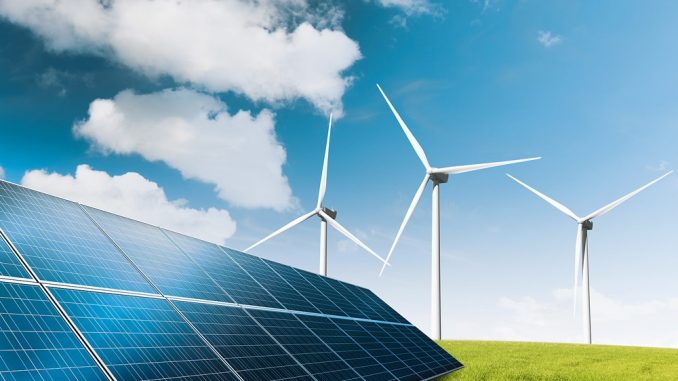
The Association “Ukrainian Union of Lessors” presented to its members an in-depth analytical study of the state and prospects of energy generation from renewable sources. One of the main objectives of the study was to identify the potential for funding the renewable energy industry through financial leasing. At the same time, analysts have collected unique data on forecasts for the development of renewable energy and equipment for it both in Ukraine and in the world.
Ukrainian Union of Lessors, with the support of the USAID Financial Sector Transformation Project, is working to identify and promote potential sectors of the Ukrainian economy that could gain significant impetus for development through leasing services while promoting diversification, expansion, and growth and domestic leasing itself.
Experts involved by the Association found that even according to conservative forecasts, the installed capacity of energy generation from renewable sources may increase by 1433% by 2030. If we consider a more optimistic scenario, which corresponds to the implementation of the announced Energy Strategy of Ukraine until 2035, the growth of energy generation capacity from renewable sources may increase by 1941% over the same period.
The researchers estimated that at least $ 780 million would be needed to implement the above-mentioned conservative scenario. US, and under the optimistic scenario – about 1,256 million dollars. USA every year. Of these investments, about 70% will be directed to the purchase of equipment for the production of energy from renewable sources. Leasing can be a financial instrument that will ensure the purchase of this equipment.
The study showed that the market for equipment for energy production from RES will range from 546 to 879 million dollars. USA on average per year until 2030, depending on the scenario of the industry. This size makes this market quite attractive for leasing.

Experts have found that at the time of active development of the RES market, the penetration of leasing in this area may be 7% and above. “With this level of penetration, the potential value of new leasing agreements in this market in Ukraine can range from $ 450 to $ 730 million. USA by 2030. “Such volumes of new business will mean an increase in the leasing market by 45-72% compared to the level of 2019. Thus, the RES industry has significant potential for leasing development.


The level of leasing penetration into the RES equipment market (in terms of WPPs and SES) is determined based on the following assumptions: Option 1 – Ukraine is able to achieve in the coming years [1] the level of leasing penetration into the RES equipment market at least 7%; Option Ukraine takes the lead compared to other countries [2] with the level of leasing penetration into the market of equipment for RES in the amount of 47%; Option 3 – estimates the maximum theoretical potential of leasing in this area and is defined as 100% penetration (the full cost of equipment for RES is provided through leasing).
Additionally, the market of accumulating electricity capacities, which is just emerging in Ukraine, was studied. According to Ukrenergo’s estimates, Ukraine will need to install 2,200 MW of storage capacity over the next 10 years. Electricity storage and storage equipment also needs financing and leasing could be an effective financial instrument in this area.
Prospects for leasing in the field of RES will soon be illustrated with the help of relevant ministries and departments of the Ukrainian Government. We also invite stakeholders interested in the development of this segment to get acquainted with the research materials and jointly promote the tools for the development of these industries.
[1] Assumptions on the main dynamics of indicators of one of the leading European countries in the field of leasing in RES. This is in the total amount of investments in RES at least 5% (in terms of wind farms and SES). Thus, even in the worst years (2016-2018), when the share of leasing in RES from the leasing market was 0.4%, the percentage of investment was about 5%. At the same time, in 2018-2019, investments in RES were lower than in Ukraine (by 9%, 62%, respectively).
[2] Which is 33% of the investment in SES, WPP. On the example of Germany, where in 2017 the value of leasing contracts in RES accounted for a third of investments in SES and WES.
